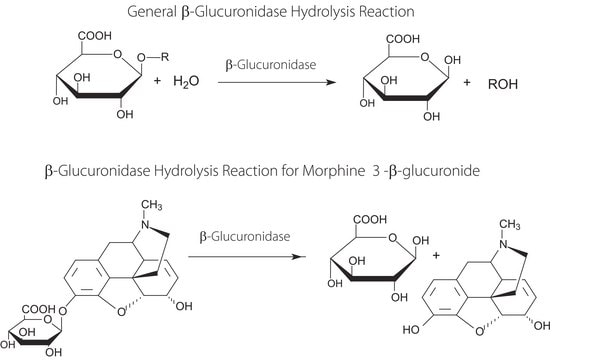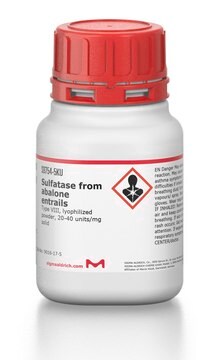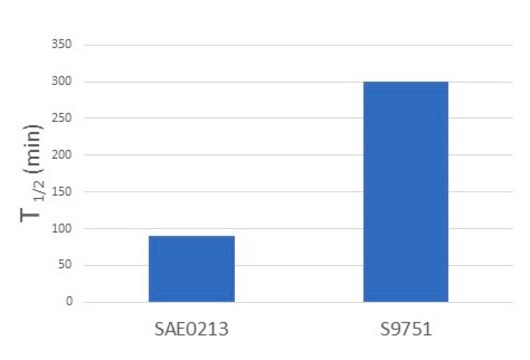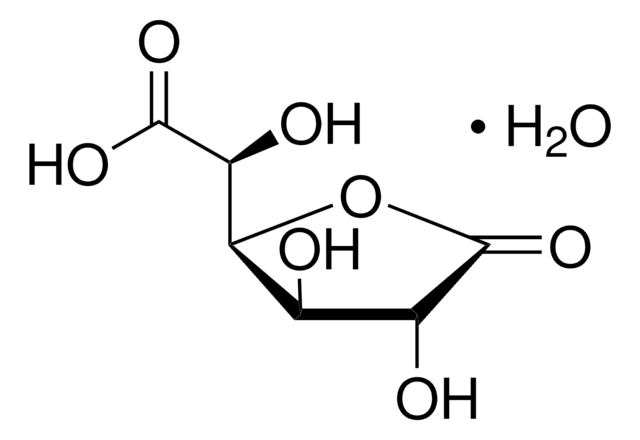S1629
Sulfatase from Aerobacter aerogenes
Type VI, buffered aqueous glycerol solution, 2-5 units/mg protein (biuret), 10-20 units/mL
Synonym(s):
Aryl-sulfatase, Aryl-sulfate sulfohydrolase, Phenolsulfatase
About This Item
Recommended Products
type
Type VI
Quality Level
form
buffered aqueous glycerol solution
specific activity
2-5 units/mg protein (biuret)
mol wt
~41 kDa
concentration
10-20 units/mL
foreign activity
β-Glucuronidase ≤10 U/mL
shipped in
wet ice
storage temp.
−20°C
Looking for similar products? Visit Product Comparison Guide
General description
Application
- as a deconjugation enzyme for treating plasma samples for quercetin quantification using liquid chromatography with tandem mass spectrometry (LC/MS/MS) analyses
- in fluorescence intensity-based enzymatic assay with an activity-based probe probe 1
- to treat sulfatide liposomes to remove the 3-O-sulfogalactosyde head from sulfatides
Biochem/physiol Actions
Unit Definition
Physical form
substrate
Storage Class Code
10 - Combustible liquids
WGK
WGK 2
Flash Point(F)
Not applicable
Flash Point(C)
Not applicable
Certificates of Analysis (COA)
Search for Certificates of Analysis (COA) by entering the products Lot/Batch Number. Lot and Batch Numbers can be found on a product’s label following the words ‘Lot’ or ‘Batch’.
Already Own This Product?
Find documentation for the products that you have recently purchased in the Document Library.
Customers Also Viewed
Our team of scientists has experience in all areas of research including Life Science, Material Science, Chemical Synthesis, Chromatography, Analytical and many others.
Contact Technical Service







